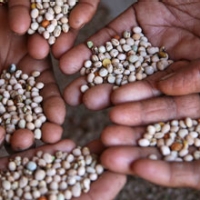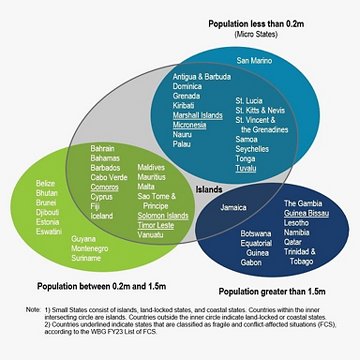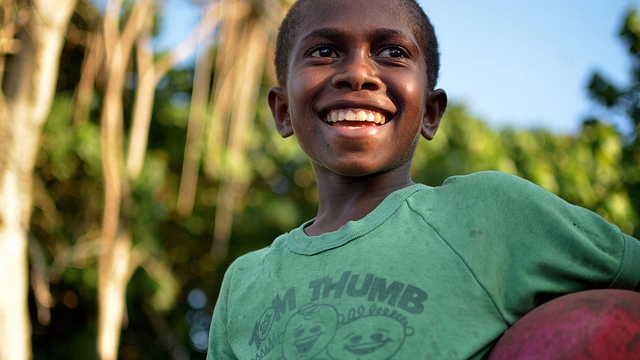Small States can face acute shortage of skills and capacity constraints, including difficulties to absorb development assistance in an effective and sustainable way. Contributing factors include high migration of educated people (“brain drain”) due to lack of economic opportunities, skills mis-match, and limited access to adequate technical and vocational training. The World Bank supports the strengthening of Small States’ capacity through technical assistance (TA) and training activities, the deployment of flexible operational policies and procedures to fit their specific circumstances, and implementation support on the ground.
Project Preparation and Design
Preparations Advances (PA) are available under the Bank’s Project Preparation Facility (PPF). The scope of the facility was increased in 2017 to finance the preparation of multiple projects and/or for activities that strengthen institutional capacity to carryout projects under a programmatic approach. Five Pacific Island Countries (PICs), namely Marshall Islands, Micronesia, Kiribati, Samoa and Tonga utilized the PA facility for the preparation of IDA18 and IDA19-financed projects and, in some cases, to temporarily finance Central Implementation Units.
In view of the rapid growth in the Bank’s Pacific portfolio, Central Implementation Units (CIUs) have been set up in six Pacific Small States (Marshall Islands, Micronesia, Kiribati, Samoa, Tonga, Tuvalu) to build institutional capacity and support project preparation and implementation at the portfolio level. The Bank capacity building efforts in the CIUs target procurement, financial management, safeguards, etc. to ensure that institutional knowledge is built and maintained.
In terms of project design, regional projects have provided a useful platform to leverage economies of scale in delivering capacity building, particularly when countries share similarities and can benefit from harmonized policies and procedures. For example, regional projects support the modernization of the legal, regulatory, and institutional frameworks governing digital services sectors and the capacity to implement them across member countries (the Caribbean Digital Transformation project, the Pacific Connectivity Program). Capacity building at the regional level strengthens the capacity for coordinated management of key regional public goods such as ocean resources (the Unleashing the Blue Economy of the Caribbean project, the Pacific Regional Oceanscape Program project). Statistical strengthening at the regional level (OECS Data for Decision Making project, Statistical Innovation and Capacity Building in the Pacific project) facilitate the use of common methodologies and ensure the comparability of data for country and regional level analytics.
Fiduciary, Environmental and Social standards
The Bank helps to build clients’ capacity on fiduciary and environmental and social standards through regular training activities and hands-on expanded implementation support (HEIS) — a modality that enables a more direct transfer of skills to clients. While the Bank’s current procurement framework allows for flexible procurement arrangements in capacity-constrained countries, the Bank also provides substantial procurement support through HEIS in several Small States. For example, in Grenada, the Bank has scaled up HEIS on procurement by providing support at the portfolio level covering seven projects, the most rapid HEIS expansion in any country. Likewise, HEIS on procurement has been scaled up in Micronesia and the Marshall Islands where it is being provided to their respective CIUs. The Bank is also supporting market engagement in Small States and applying alternative arrangements such as contracting of UN Agencies when private sector suppliers are not a feasible option.
In the Caribbean, the Bank recently conducted a procurement training series program for Guyana, Suriname, and Belize as well as training on operating countries’ own procurement systems in Dominica, Grenada, St. Lucia, and St. Vincent & the Grenadines. In the Pacific, in-country training activities –which were limited by border closings during the COVID-19 pandemic—have now resumed. These include a recent Bank project portfolio review in the Solomon Islands followed by training to all implementing agencies. World Bank training modules expand to core project management, budget preparation, legal aspects of Bank financing, monitoring and evaluation, in addition to financial management, procurement and safeguards trainings.
Supporting capacity to build climate and economic resilience
Fiscal and financial resilience: Technical assistance targets effective disaster risk financing strategies to better manage disaster risks, accelerate recovery and build resilience. Examples include the Caribbean Risk Financing TA and the Financial Solutions for Climate and Natural Disaster Risk Program. The Bank also supports improvements in macro-fiscal frameworks to strengthen debt and fiscal sustainability, including through fiscal buffers to better respond to natural disasters and other external shocks. Examples of ongoing TA activities include the Resilient Economic Growth in the Caribbean: Strengthening Trade in Services and Fiscal Responsibility, and Caribbean: Strengthening Tax Policy for Climate Resilient Growth, as well as recent TA and policy lending support to the implementation of fiscal responsibility frameworks.
Climate resilience. The World Bank is supporting Small States’ efforts to mainstream climate smart planning and build climate resilience, including meeting their Nationally Determined Contributions (NDCs) targets and goals on climate adaptation under the COP21. It is assisting Small States to translate NDCs into policies and investments, with ongoing TA in Antigua and Barbuda, Jamaica, St. Vincent and the Grenadines, and Sao Tome and Principe. The Bank also provides analytics and TA to national and regional institutions to strengthen disaster risk preparedness and response, including through TA for early warning systems (the Strengthening Hydrometeorological and Early Warning Systems in the Caribbean TA, the Pacific Resilience project) as well as for building resilient infrastructure (the Caribbean Resilient Infrastructure and Urban Planning TA).
Debt sustainability. Since 2018, twenty-five SSF members have benefitted from seminars for senior officials and workshops for technical staff on the revised Debt Sustainability Framework for LICs (LIC DSF). [1]
Implementation support on the ground
To maximize the development effectiveness and institutional development, particularly in the context of scaled up financing since IDA18, the World Bank has been increasing the number of staff deployed in fragile countries and Small States. The number of field-based staff working in SSF member countries increased by 41 percent in 2019 relative to 2016.
The Bank’s Pacific-based staff has increased by over 50 percent— from 108 at the end of IDA17 to 135 at the end of IDA18 and 158 to date. A multi-donor trust fund supported by Australia and New Zealand is contributing to growing the Bank’s presence in the Pacific by supporting increased staffing and expansion of local offices. The Bank has also substantially expanded its presence in the Caribbean with the Country Director’s move and staff decentralization to Kingston, Jamaica in November 2021. The number of World Bank and IFC staff based in Kingston more than doubled from 15 in November 2021 to 35 in December 2022.
Looking Ahead: The Small States Forum Now And Going Forward
The World Bank Group remains committed in supporting Small States to pursue their development goals through innovative approaches that fit their unique circumstances. Convening every year on the sidelines of the World Bank Group/IMF Annual Meetings, the Small States Forum (SSF) will continue to provide an effective platform for dialogue and knowledge-sharing on how the World Bank Group can best support Small States. The Forum is chaired on a rotating basis among SSF members of the Caribbean, Africa, Asia and the Pacific. Bhutan currently holds the Chairmanship of the Forum. The most recent SSF was held in April 2023 in Washington DC.




